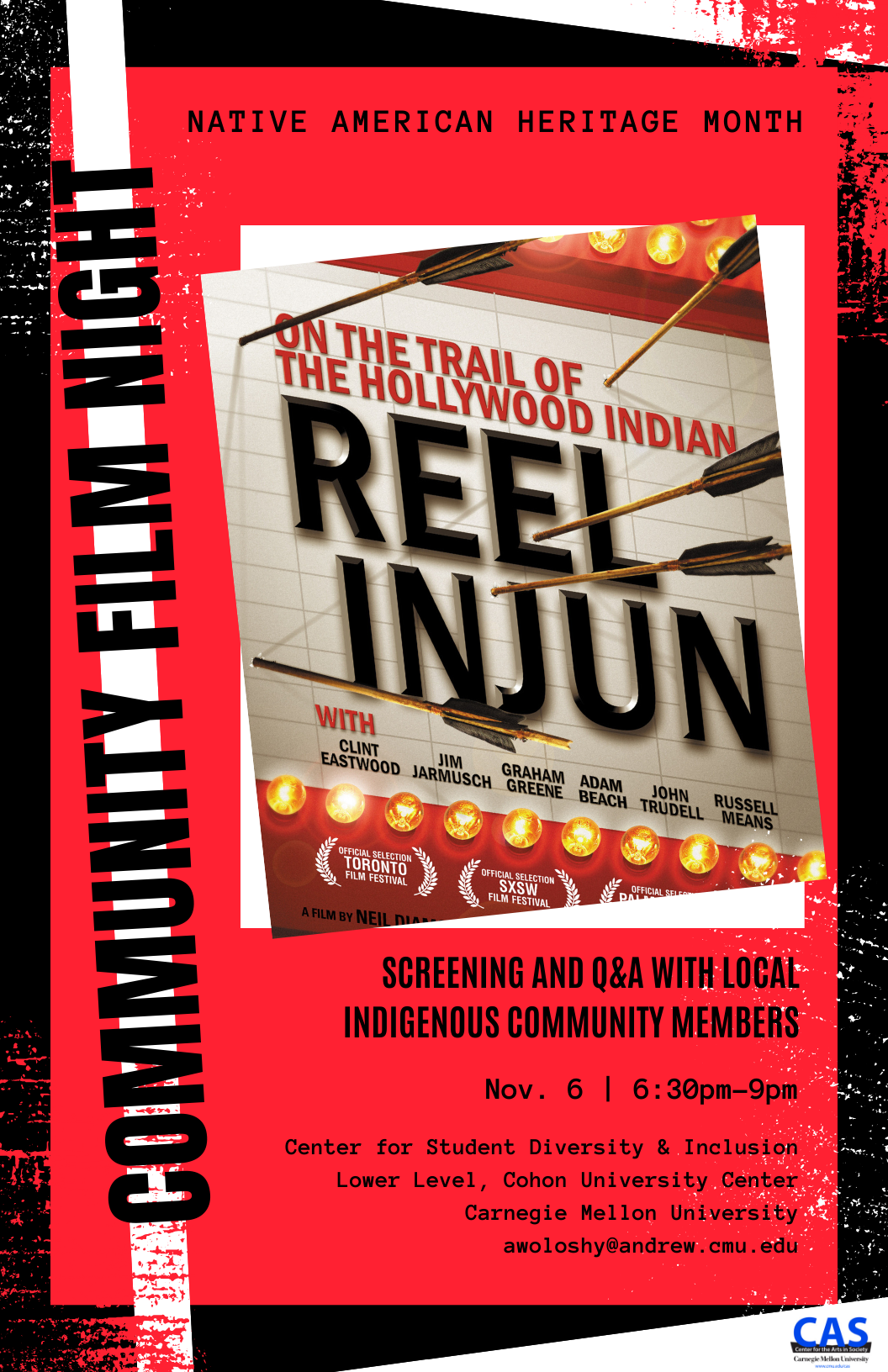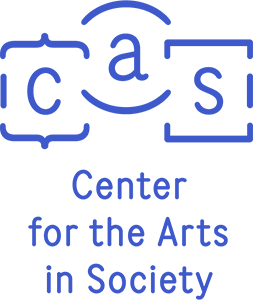Community Film Night: Reel Injun
The students of North American Indigenous Music Seminar (NAIMS) host a film night and discussion for the CMU and Pittsburgh communities.

Join us in watching Cree filmmaker Neil Diamond’s documentary Reel Injun (2009). Local Indigenous/Native American members of the Council of Three Rivers American Indian Center will give their reactions to the film and participate in a Q&A.
We hope the film and discussion will engage participants on the topics of Native American culture (stereotypes vs. reality), storytelling, rights of indigenous peoples, and Native-created media. Consider the following questions:
- What images or ideas do I hold about Native Americans/Indigenous peoples? Where did those images or ideas come from?
- What representations of Native Americans/Indigenous peoples have I seen lately on the big and small screens?
- What responsibility do I believe media (e.g., film, television) has in representing different groups of people?
Free and open to the public.
Film begins at 6:30pm
Light snacks will be provided. Feel free to bring your own movie snacks.
Location: The Center for Student Diversity & Inclusion, Lower Level, Cohon University Center, Carnegie Mellon University.
About the film
Cree filmmaker Neil Diamond takes a look at the Hollywood Indian, exploring the portrayal of North American Natives through a century of cinema. Traveling through the heartland of America, and into the Canadian North, Diamond looks at how the myth of “the Injun” has influenced the world’s understanding — and misunderstanding — of Natives.
Reel Injun traces the evolution of cinema’s depiction of Native people from the silent film era to today, with clips from hundreds of classic and recent Hollywood movies, and candid interviews with celebrated Native and non-Native film celebrities, activists, film critics, and historians.
This event is part of Native American Heritage Month and is hosted by the Center for the Arts in Society and NAIMS.
